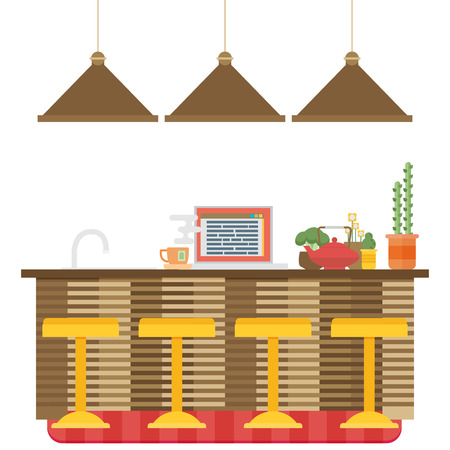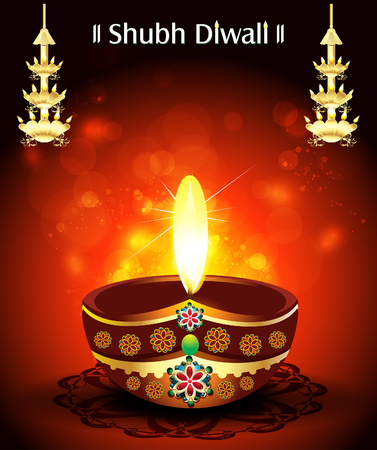1. Introduction to Traditional Diyas in Indian Culture
In the vibrant tapestry of Indian culture, traditional diyas hold a luminous place, especially during ceremonies and festivals. Diyas, simple oil lamps made typically from clay, have been illuminating homes, temples, and public spaces across India for centuries. Their presence transcends mere lighting; they symbolize purity, positivity, and the triumph of light over darkness. During major festivals like Diwali, Karthika Deepam, and even in daily pujas (rituals), families gather to light diyas as an offering to deities and as a way of inviting prosperity into their lives. The gentle glow of these lamps creates an atmosphere filled with warmth, spirituality, and togetherness. Throughout history, the diya has served not only as a source of physical light but also as a beacon of hope, faith, and continuity in Indian traditions. From rural villages to bustling urban homes, the act of lighting a diya is woven deeply into the fabric of Indian identity—signifying respect for age-old customs while fostering a sense of community and celebration.
2. Evolution and Arrival of Modern LEDs
In recent decades, India has witnessed a remarkable shift from traditional oil diyas to modern LED lighting, especially during major festivals such as Diwali, Navratri, and Eid. This transition has been driven by a blend of technological advancement, urbanisation, and changing lifestyles in Indian society. The arrival of LEDs (Light Emitting Diodes) not only offered a practical alternative but also resonated with the aspirations of the new generation seeking sustainability and efficiency without compromising on festive vibrancy.
LED lights gained popularity rapidly due to several factors unique to the Indian context. Firstly, their energy efficiency aligns well with Indias increasing focus on sustainable development and power conservation. Secondly, LEDs are available in a myriad of colours and designs, making them perfect for creative decoration that matches the diverse cultural aesthetics found across Indias states. Additionally, the ease of installation and safety features—such as reduced heat emission and minimal risk of fire—have made LEDs an attractive option for households, communities, and event organisers.
Below is a comparison highlighting key factors contributing to the popularity of LED lights over traditional diyas during Indian ceremonies:
| Feature | Traditional Diyas | Modern LEDs |
|---|---|---|
| Energy Consumption | Requires oil/ghee; high cumulative usage during large events | Low electricity consumption; can run on batteries or solar power |
| Safety | Open flame; risk of fire accidents especially with children and pets around | No open flame; cool to touch; safer for indoor and outdoor use |
| Variety & Customisation | Limited shapes and sizes; mostly earthen lamps | Wide range of shapes, sizes, and colour-changing options available |
| Sustainability | Biodegradable but requires frequent replacement of oil/wicks | Long-lasting; reusable for multiple occasions; eco-friendly options available |
| Cultural Connection | Deep-rooted tradition; spiritual symbolism in rituals | Modern appeal; blends with contemporary décor while retaining festive spirit |
This growing acceptance of LEDs is not just limited to urban India but is also spreading in tier-2 cities and rural areas thanks to government initiatives promoting energy-saving technologies. As a result, modern LEDs have become an essential part of Indian celebrations, standing alongside traditional diyas to create an atmosphere that is both culturally rich and technologically advanced.

3. Comparative Analysis: Diyas vs. LEDs in Ceremonial Use
From both an engineering and cultural perspective, the use of traditional diyas and modern LED lights during Indian ceremonies reflects a fascinating blend of heritage and innovation.
Cultural Significance and Emotional Connect
Diyas, made from clay and filled with oil or ghee, hold deep-rooted significance in Indian rituals. Lighting a diya is considered auspicious, symbolising the victory of light over darkness and good over evil. The gentle glow of a diya is believed to invite positive energy and purity into homes, especially during festivals like Diwali or Navaratri. In contrast, while LEDs are visually appealing and can create vibrant displays, they often lack the spiritual depth and emotional resonance associated with traditional diyas.
Engineering Efficiency and Practicality
When examined through an engineering lens, LEDs offer significant advantages. They are energy-efficient, safe to handle, reusable, and produce minimal heat—making them suitable for long durations and large-scale decorations in cities like Mumbai or Bengaluru. Unlike diyas, which require constant attention to maintain their flame and consume natural resources such as oil or ghee, LEDs operate with minimal maintenance. This makes them ideal for urban households where safety concerns or time constraints may limit the use of open flames.
Environmental Impact
The environmental implications also differ. Diyas are biodegradable but contribute to resource consumption if used in large numbers. On the other hand, LEDs reduce waste due to their longevity but may add to electronic waste if not disposed of responsibly. Both options have pros and cons depending on scale and usage patterns during events like Ganesh Chaturthi or Durga Puja.
The Middle Path: Harmonising Tradition with Technology
Many Indian families now combine both elements—lighting diyas for core rituals to preserve spiritual authenticity while using LED decorations for safety and grandeur. This adaptive approach reflects India’s ongoing journey to harmonise tradition with technological advancement, ensuring that every celebration retains its essence while embracing progress.
4. Impact on Ambience and Energy Consumption
Indian ceremonies, whether held in sprawling temple courtyards or within the warmth of family homes, are celebrated for their vibrant ambience and spiritual energy. The choice between traditional diyas and modern LEDs significantly influences both the atmosphere and resource consumption during large gatherings and religious functions.
Environmental Considerations
Diyas, made from natural clay and fueled by ghee or oil, are biodegradable and eco-friendly when sourced locally. However, large-scale use can contribute to increased air pollution due to smoke emissions, especially in enclosed spaces. On the other hand, LEDs are energy-efficient and do not emit smoke or soot, making them a cleaner alternative for urban celebrations with air quality concerns. Yet, mass production and disposal of LEDs raise questions about electronic waste management.
Sensory Experience: Light Quality and Atmosphere
The sensory impact of lighting is profound in Indian rituals. Diyas produce a soft, warm glow that flickers gently, creating an intimate and sacred environment perfect for pujas and aartis. This natural light is often associated with positive vibrations (shubh prabhaav) in Vastu Shastra. In contrast, LEDs offer customisable colours and patterns but may lack the authenticity and emotional connection of traditional flames, especially among elders who value heritage practices.
Comparison Table: Diyas vs. LEDs
| Aspect | Diyas | LEDs |
|---|---|---|
| Environmental Impact | Biodegradable; smoke emissions | No emissions; potential e-waste |
| Energy Consumption | Manual fuel (ghee/oil) | Low electricity usage |
| Sensory Ambience | Warm, authentic glow; soothing effect | Customisable colours; less organic feel |
| Cultural Connection | Deeply rooted in tradition | Modern convenience; less sentimental value |
| Maintenance & Safety | Requires monitoring; fire risk | Safe; minimal supervision needed |
Optimising Lighting Choices for Gatherings
For grand events like Diwali melas or temple festivals, a hybrid approach is increasingly popular in Indian cities such as Mumbai and Bengaluru—combining the spiritual resonance of diyas for rituals with the practicality of LEDs for decorative displays. This blend not only optimises energy usage but also respects cultural sentiments while addressing modern environmental responsibilities. Ultimately, the selection between diyas and LEDs depends on balancing tradition with sustainability, ensuring every gathering remains both festive and conscious of its ecological footprint.
5. Cultural Acceptance and Regional Preferences
Blending Tradition and Modernity Across India
India’s vast cultural landscape is reflected in how different communities approach the use of traditional diyas and modern LEDs during ceremonies. In North India, especially during Diwali, families often begin rituals by lighting clay diyas, believing their flickering flames invite prosperity and drive away negativity. However, urban households and event organizers increasingly incorporate LED string lights to create elaborate decorations while ensuring safety and convenience.
Regional Influences on Lighting Choices
In South India, oil lamps—deepams—hold deep spiritual significance, especially during Karthigai Deepam. Here, the preference still leans towards oil diyas for core rituals, but LEDs are widely accepted for outdoor adornments and large-scale public events. In Western India, such as Gujarat, communities are known for their grandeur during Navratri and Diwali. They creatively blend both diyas and LEDs: handmade terracotta lamps accentuate altars, while vibrant LED installations light up entire neighborhoods, symbolizing the fusion of heritage with technology.
Cultural Attitudes Shaping Innovation
Across Eastern states like West Bengal, traditional aesthetics are preserved through clay diyas in Durga Puja pandals. Yet, environmental concerns have spurred innovation; eco-friendly LED designs inspired by diya shapes are gaining popularity among younger generations. This reflects a growing consciousness about sustainability alongside respect for tradition.
The Urban-Rural Divide
Urban areas generally display a higher acceptance of LEDs due to lifestyle demands and practical constraints such as apartment living or fire safety regulations. Conversely, rural regions continue to favour oil lamps for their spiritual symbolism and community bonding aspects during festivals. Nevertheless, even in villages, LEDs are gradually making inroads through government electrification drives and festive market trends.
A Harmonious Coexistence
The dynamic interplay between traditional diyas and modern LEDs showcases India’s ability to honour time-honoured customs while embracing change. Whether it is a grand wedding in Mumbai or a small village festival in Odisha, the choices reflect not just aesthetic preferences but also evolving values—where innovation coexists with deep-rooted spirituality.
6. Future Trends: Engineering Tradition with Modernity
As India continues its march towards technological advancement, the integration of traditional aesthetics with modern energy-efficient solutions is set to redefine how we celebrate our religious and cultural ceremonies. The heartwarming glow of diyas, symbolising light over darkness and good over evil, has long been central to Indian festivals such as Diwali and Navratri. However, with growing environmental concerns and the need for sustainable practices, the future lies in engineering a seamless blend between tradition and innovation.
Synergising Craftsmanship and Technology
Emerging trends point towards collaborations between local artisans and engineers to create LED-based diyas that preserve the intricate designs of traditional clay lamps while incorporating smart features like remote control, variable brightness, and programmable patterns. Such innovations ensure that the spirit of celebration remains rooted in heritage, even as technology adds convenience and efficiency.
Cultural Authenticity Meets Sustainability
With increasing awareness about carbon footprints and energy consumption, communities are embracing eco-friendly alternatives without compromising on cultural symbolism. Solar-powered LED diyas, biodegradable lamp casings, and recyclable materials are gaining popularity in urban and rural settings alike. These advancements reflect a collective commitment to both mother earth and ancestral customs.
Inclusive Celebrations for Modern India
The fusion of traditional diyas with modern LEDs makes ceremonies more inclusive—elderly family members can participate safely without fire hazards, children can engage in festivities with minimal risk, and those living abroad can connect digitally through synchronized lighting events. Moreover, smart lighting systems allow for customisation based on regional preferences, ensuring that every community retains its unique flavour while benefitting from technological progress.
Looking ahead, the journey of Indian ceremonies is one where tradition is not left behind but rather engineered into the future. By harmoniously integrating energy-efficient technologies with time-honoured rituals, we illuminate not just our homes but also our path towards a culturally rich and sustainable tomorrow.


